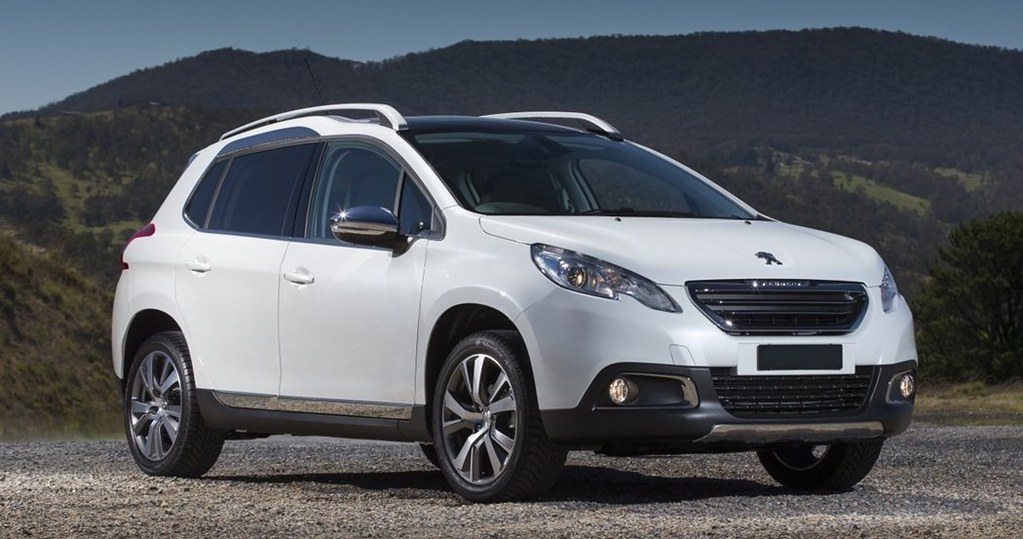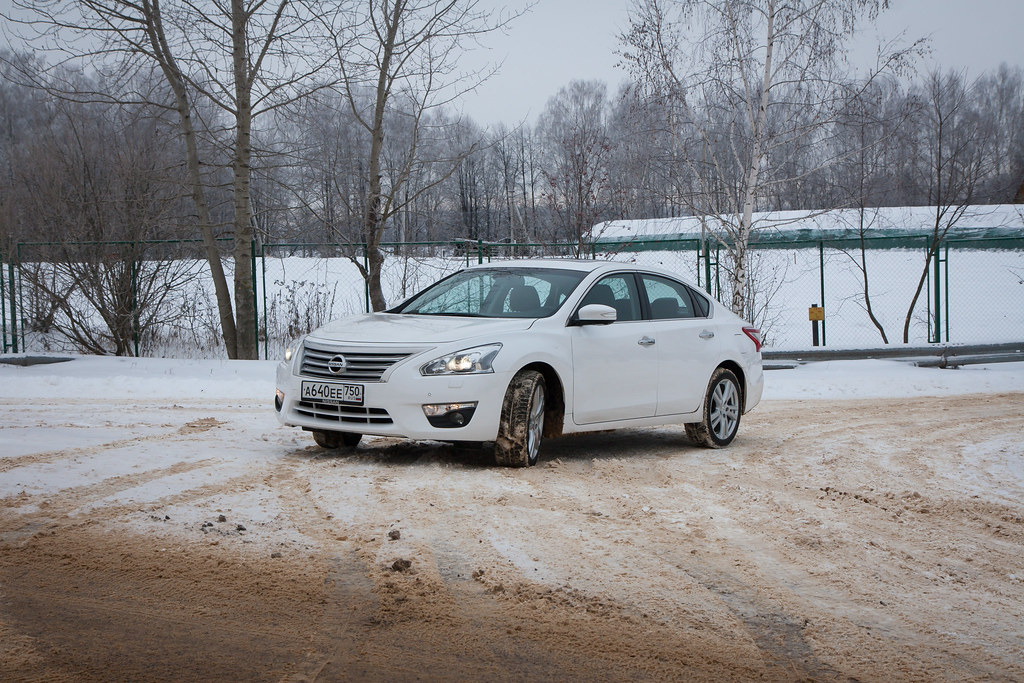
Shopping for a used car often feels like a savvy financial move, a way to secure reliable transportation without the hefty price tag of a new vehicle. However, this seemingly straightforward path can quickly turn into a costly nightmare if buyers are swayed by attractive prices, stylish designs, or even a brand’s reputation without truly understanding its long-term reliability.
Too many people fall into this trap, only to later grapple with an endless cycle of expensive repairs, a frustrating hunt for hard-to-find parts, or unexpected mechanical failures that leave them stranded and financially burdened. Greg Damon, host of KMOX’s “At Your Service” and winner of the 2007 Ultimate Golden Mechanic Award, strongly advises buyers to “look beyond the badge and carefully research each option.” This isn’t just about initial savings; it’s about avoiding a genuine money pit.
Damon, a professional who spends “every week inspecting and repairing vehicles,” has seen firsthand which models consistently rack up huge bills for their owners. He points out that Americans are sometimes drawn to European and Korean models without fully grasping the true cost of ownership over time. For those seeking true reliability and peace of mind in the used car market, here are the first seven vehicles that mechanics consistently warn buyers to avoid, detailing the specific issues that make them financial liabilities.
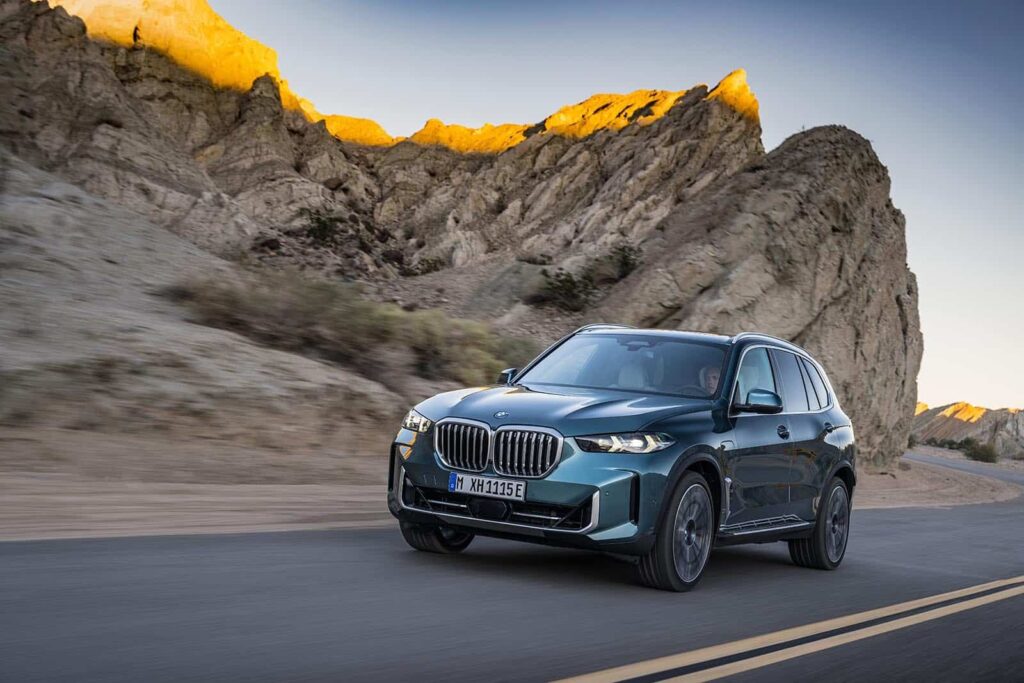
1. **BMW X5**The BMW X5 SUV holds strong appeal for its prestige, luxurious feel, and sporty handling, making it an attractive used option. Yet, mechanics universally agree that long-term ownership of a used X5 can be profoundly frustrating and remarkably expensive.
According to CarBuzz, this esteemed SUV frequently grapples with pervasive oil leaks, an unreliable air suspension system, and recurring electronic issues that are notoriously expensive and complex to diagnose. Greg Damon highlights that repairs for European cars like BMW become significantly more complex and pricey once the factory warranty expires, leading to exorbitant bills for sophisticated systems.
Sourcing affordable replacement parts for the BMW X5 is a consistent challenge, as reported by CarExamer. Finding local mechanics with the specialized knowledge to work on the X5’s intricate systems is another hurdle. Ignoring minor problems like small oil leaks or initial air suspension issues can rapidly escalate into repair bills totaling thousands of dollars.
For budget-focused buyers, what begins as an aspiration for luxury often devolves into a severe financial drain. The sophisticated engineering contributing to its sporty handling also contributes to its high repair costs, making the X5 a prime example of a fancy SUV that frequently becomes a money pit.
Car Model Information: 2022 BMW X5 M50i
Name: BMW X5
Manufacturer: BMW
Class: Mid-size,luxury vehicle,crossover SUV
BodyStyle: SUV
Production: 1999–present
Layout: Front-engine, four-wheel-drive layout,Front-engine, rear-wheel-drive layout
Categories: 2000s cars, 2010s cars, All-wheel-drive vehicles, All articles with unsourced statements, Articles with short description
Summary: The BMW X5 is a mid-size luxury crossover SUV produced by BMW. The X5 made its debut in 1999 as the E53 model. It was BMW’s first SUV. At launch, it featured all-wheel drive and was available with either a manual or automatic gearbox. The second generation was launched in 2006, and was known internally as the E70. The E70 featured the torque-split capable xDrive all-wheel drive system mated to an automatic gearbox. In 2009, the X5 M performance variant was released as a 2010 model.
BMW marketed the X5 officially as a “Sports Activity Vehicle” (SAV), rather than an SUV, to indicate its on-road handling capability despite its large dimensions. The X5 signaled a shift away from the utilisation of body-on-frame construction, in favour of more modern monocoque chassis construction. Although the Mercedes-Benz M-Class was introduced more than a year prior to the X5, the X5 was the first to utilise a monocoque chassis. The M-Class used body-on-frame construction until its second generation.
The X5 is primarily manufactured in North America, at BMW Group Plant Spartanburg. Assembly operations also took place in Russia by Avtotor until February 2022, along with operations in India, Indonesia, Malaysia, and Thailand. The X5 is also modified for armoured security versions, at the BMW de México Toluca plant.
The automaker’s SAV series, which was started by the X5, has expanded with derivations of other number-series BMWs. This began in 2003 with the X3, and continued in 2008 with the X6 (which shares its platform with the X5).
Get more information about: BMW X5
Buying a high-performing used car >>>
Brand: BMW Model: X5
Price: $55,855 Mileage: 21,135 mi.
Read more about: Beyond the Badge: A Deep Dive into 14 Overrated Car Brands You Might Regret Buying in 2025

2. **Nissan Altima (2013–2015)**The Nissan Altima has been celebrated for its fuel efficiency, but specific model years from 2013 to 2015 are widely known among mechanics for chronic transmission and engine troubles. These persistent issues should serve as a significant deterrent for prospective used car buyers.
CoPilot reports that these particular Altima years are plagued by major transmission problems, largely due to Nissan’s Continuously Variable Transmission (CVT) design. Beyond the transmission, frequent engine issues and even dangerous steering failures have been documented, undermining the car’s initial appeal of affordability and efficiency.
Greg Damon emphasizes that CVT transmissions are expensive and complicated to repair, with common failures frequently occurring well before 100,000 miles. This premature breakdown leads to substantial long-term costs that quickly erode any upfront savings a used car buyer might have hoped for.
These chronic headaches are not just financial burdens; they also introduce potential safety risks. A transmission that slips unexpectedly or an engine that stalls at speed can create hazardous situations. Mechanics strongly advise looking toward other sedan options with fewer big-ticket repair risks and a more dependable ownership experience.
Car Model Information: 2024 Nissan Altima 2.5 SL
Name: Nissan Altima
Caption: 2024 Nissan Altima SR (L34; US)
Manufacturer: Nissan
Aka: Nissan Bluebird
Production: 1992–present
Class: Compact car
Predecessor: Nissan Bluebird,Nissan Stanza
ModelYears: 1993–present
Categories: 2000s cars, 2010s cars, 2020s cars, All-wheel-drive vehicles, All Wikipedia articles written in American English
Summary: The Nissan Altima is a mid-size car manufactured by Nissan since 1992. It is a continuation of the Nissan Bluebird line, which began in 1955.
The Altima has historically been larger, more powerful, and more luxurious than the Nissan Sentra but less so than the Nissan Maxima. The first through fourth-generation cars were manufactured exclusively in the United States and officially sold in North and South America, along with the Middle East and Australia. For other markets, Nissan sold a related mid-size sedan called the Nissan Teana which was between the Altima and Maxima in terms of size. In 2013, the Teana became a rebadged version of the fifth-generation Altima.
The name “Altima” was originally applied to a top trim line of the Nissan Leopard for the Japanese market in 1986, and then to the Nissan Laurel Altima mid-size car sold in Central America and the Caribbean before 1992. In 1992, Nissan discontinued the Stanza which was a Nissan Bluebird clone, replacing it with the US-built Altima, while remaining a compact car. The first Altima was produced in June 1992, as a 1993 model. All Altima models for the North American market were built in Smyrna, Tennessee, until June 2004, when Nissan’s Canton, Mississippi plant also began producing the model to meet high demand.
Get more information about: Nissan Altima
Buying a high-performing used car >>>
Brand: Nissan Model: Altima
Price: $25,588 Mileage: 34,897 mi.

3. **Hyundai Kona (2018, 2021)**Americans considering a slightly used small SUV, particularly Hyundai Konas from 2018 and 2021, should approach with caution. While appealing, these specific years are notorious for dangerous engine defects and a plethora of electrical problems, as documented by CoPilot and Vehicle Accident Injury.
Owners have reported disturbing issues, including abnormal knocking noises, unexpected engine stalling, and even complete engine failures linked to faulty piston rings. Such catastrophic engine problems are not only incredibly costly but also pose serious safety concerns, transforming a seemingly budget-friendly SUV into a significant gamble.
Greg Damon points out that Korean models sometimes harbor complicated reliability issues beneath an appealing exterior. Recalls and subsequent repairs can be exceedingly costly, with replacement engines potentially running into thousands of dollars if out of warranty. Even minor electrical bugs are surprisingly common on Konas, adding further stress and unexpected expenses for risk-averse shoppers.
The cumulative effect of these engine and electrical troubles makes these particular Hyundai Konas a vehicle mechanics frequently advise against. It’s a reminder that a low initial price can hide considerable long-term financial exposure.
Car Model Information: 2022 Hyundai KONA SEL
Name: Hyundai Kona
Caption: Hyundai Kona N Line (SX2)
Manufacturer: Hyundai Motor Company
Aka: Hyundai Kauai (Portugal)
Production: 2017–present
ModelYears: 2018–present
Class: Subcompact crossover SUV
BodyStyle: SUV
Layout: ubl
Categories: 2020s cars, All-wheel-drive vehicles, All Wikipedia articles in need of updating, Articles containing Chinese-language text, Articles containing Korean-language text
Summary: The Hyundai Kona (Korean: 현대 코나) is a subcompact crossover SUV produced by the South Korean manufacturer Hyundai. The first-generation Kona debuted in June 2017 and the production version was revealed later that year. It is positioned between the Venue or Bayon and the Tucson in Hyundai crossover SUV line-up. The battery electric version called the Kona Electric (or Kona EV) was first launched in South Korea during the first half of 2018 and rolled out gradually worldwide afterwards.
Get more information about: Hyundai Kona
Buying a high-performing used car >>>
Brand: Hyundai Model: Kona
Price: $17,399 Mileage: 29,415 mi.

4. **Chevrolet Cruze (2011–2016)**The Chevrolet Cruze was initially marketed on the promise of affordability and efficiency. However, owners of models from 2011 to 2016 (and specifically 2012 and earlier years) frequently encounter a litany of engine, transmission, and coolant problems, often undermining the car’s perceived value.
Kelley Blue Book highlights that the Cruze is prone to recurring leaks, various electrical issues, and unexpected stalling. What’s more concerning is that some necessary repairs can easily exceed the vehicle’s remaining market value, turning an affordable purchase into a financial black hole. This makes repair decisions particularly difficult for owners facing these widespread faults.
Mechanics consistently observe a pattern of recurring coolant leaks, premature failure of water pumps, and transmissions that operate roughly. Many in the trade openly state that these issues make the Cruze “just aren’t worth it” for savvy used car buyers seeking long-term reliability. The pervasive nature of these cooling system and drivetrain problems makes them a significant point of contention.
When considering a compact sedan, mechanics routinely suggest that alternatives like the Toyota Corolla or Honda Civic boast far superior reliability records. These options are likely to incur significantly lower costs to keep on the road, offering a much more predictable and financially sound ownership experience than the problematic Chevrolet Cruze.
Car Model Information: 2014 Chevrolet Cruze 1LT
Name: Chevrolet Cruze
Caption: 2017 Chevrolet Cruze LT sedan
Manufacturer: General Motors
Aka: unbulleted list
Production: unbulleted list
ModelYears: 2011–2019 (North America),2026 (Middle East)
Class: Compact car
Layout: Front-engine, front-wheel drive
Predecessor: unbulleted list
Successor: unbulleted list
Categories: 2010s cars, 2020s cars, ANCAP small family cars, All articles containing potentially dated statements, All articles with dead external links
Summary: The Chevrolet Cruze is a compact car produced by General Motors from 2008 through 2023. It was designated as a globally developed, designed, and manufactured four-door compact sedan, complemented by a five-door hatchback body variant from 2011, and a station wagon in 2012. The Cruze replaced several compact models, including the Chevrolet Optra which was sold internationally under various names, the Chevrolet Cobalt sold exclusively in North America, and the Australasian-market Holden Astra.
The Cruze was released in 2008 for the South Korean market as the Daewoo Lacetti Premiere prior to the adoption of its international name in 2011, when the Daewoo brand was discontinued. In Australasia, the model was sold between 2009 and 2016 as the Holden Cruze. In 2016, the Cruze sedan was restyled and renamed for the Australasian market as the Holden Astra Sedan, as a sedan complement to the Holden Astra family.
Due to the market shift towards SUVs and decreasing sales, the Cruze has been gradually phased out. Production of the Cruze in South Korea ended in 2018 as part of restructuring of GM Korea, which in turn ceased supply of the Holden Astra Sedan to Australasia. In the United States and Mexico, production ended in 2019, while production in China ended in 2020. Production continued in Argentina until 2023. It was replaced by the Monza in China, which is known as the Cavalier in Mexico.
In 2025, the Cruze was revived as a rebadged Chevrolet Monza for the Middle East.
Previously, the nameplate has been used for a version of a subcompact hatchback car produced under a joint venture with Suzuki from 2001 to 2007, and was based on the Suzuki Ignis.
Get more information about: Chevrolet Cruze
Buying a high-performing used car >>>
Brand: Chevrolet Model: Cruze
Price: $7,900 Mileage: 88,975 mi.
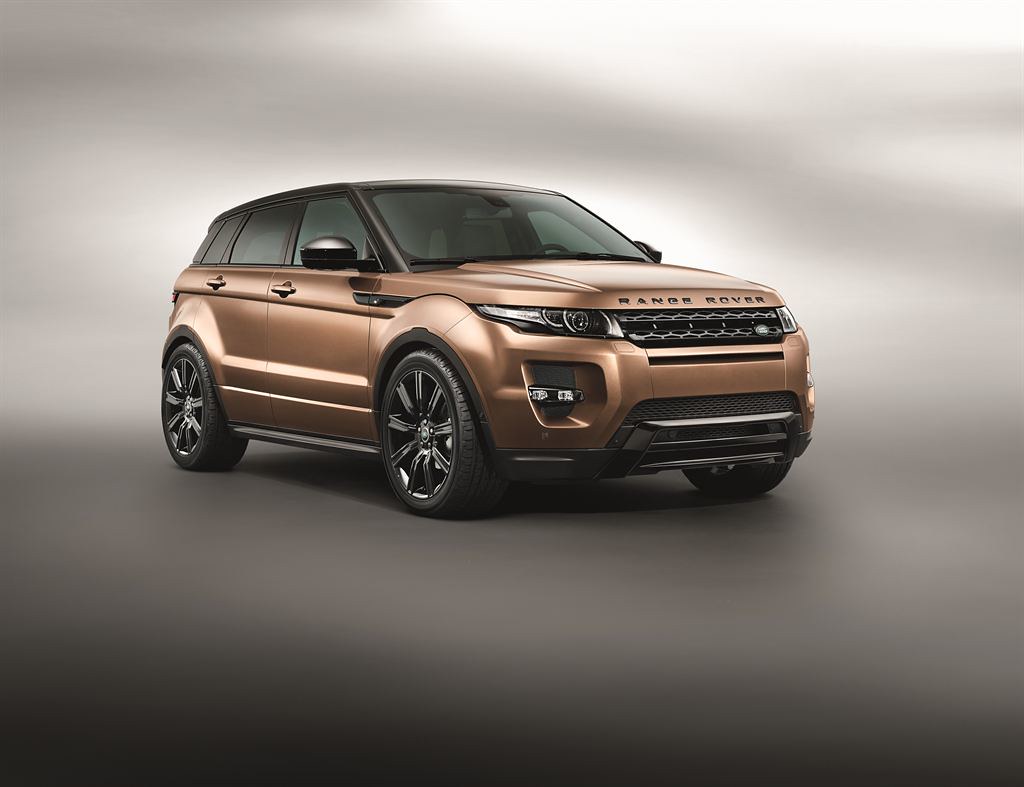
5. **Land Rover Range Rover**The Land Rover Range Rover is globally renowned for its opulent luxury and impressive off-road capabilities, making it a tempting used SUV option. Yet, its reliability track record is notoriously poor, a stark contrast to its aspirational image.
According to Autotrader, the Range Rover is persistently plagued by a wide array of failures across its suspension, engine, and complex electronic systems. Each of these can become immensely costly to diagnose and repair, quickly eroding the value proposition of a used model. Greg Damon singles out European luxury vehicles for their prohibitively high parts prices and intricate diagnostics, often demanding dealership-level expertise at a premium.
Air suspension problems are particularly expensive and common, as reported by CoPilot. Even minor wear and tear in this system can rapidly escalate into major repair bills for unsuspecting owners, making it a significant financial gamble and turning routine maintenance into budget-busting overhauls.
Used Range Rovers are also known to lose value rapidly, exacerbated by their notorious reliability issues. The constant threat of unexpected and costly bills often forces owners to sell their vehicles, regardless of their desire to keep it. This makes the Range Rover a luxurious choice that often delivers premium headaches and a bottomless pit for repair funds.
Car Model Information: 2020 Audi Q5 45 Premium
Logo: Range Rover logo.svg
Caption: 2022 Range Rover SE P440e (L460, fifth generation, United Kingdom)
Aka: Range Rover Vogue (1981–2022),Range Rover Autobiography (1994–present)
Name: Range Rover
Manufacturer: ubl
Production: 1969–present
Assembly: Solihull
Class: Mid-size luxury car,SUV
Layout: Front-engine, four-wheel-drive layout
Sp: uk
Categories: 1980s cars, 1990s cars, 2000s cars, 2010s cars, 2020s cars
Summary: The Land Rover Range Rover, generally shortened to Range Rover, is a 4WD luxury mid to full size crossover marque and sub-brand of Jaguar Land Rover, owned by India-based Tata Motors. The Range Rover line was launched in 1970 by British Leyland and since 2022 is in its fifth generation.
Additional models have been launched under the Range Rover name, including the Range Rover Sport, Range Rover Evoque, and Range Rover Velar.
Get more information about: Range Rover
Buying a high-performing used car >>>
Brand: Land Rover Model: Range Rover
Price: $20,955 Mileage: 51,510 mi.
Read more about: The Unparalleled Echo: Michael Jackson’s Enduring Legacy and His Seismic Impact on Music, Culture, and Stardom

6. **BMW 3 Series (2006–2013, E90 Generation)**The BMW 3 Series, especially the E90 generation (2006–2013), is often celebrated as the quintessential entry-level luxury sports sedan, promising an engaging drive and BMW prestige. However, independent mechanics often tell a different story, warning potential buyers of significant long-term ownership nightmares.
The most problematic variants are typically those with the N52 or turbocharged N54/N55 engines. These sophisticated powerplants are unfortunately plagued with recurring and expensive issues, including leaking valve cover gaskets, frequent water pump failures, and malfunctioning VANOS solenoids critical for variable valve timing. These lead to significant performance degradation and costly repairs.
Owners also frequently face high-pressure fuel pump failures, the infamous turbo wastegate rattle, and extensive carbon build-up on intake valves. These problems often manifest well before 80,000 miles, necessitating expensive and complex repairs that quickly diminish the initial allure of a luxury bargain.
The E90 generation is also prone to electrical gremlins, affecting components like window regulators, central locking, and dashboard electronics, adding to frustration and repair costs. Even routine maintenance is considerably more expensive. Mechanics frequently see these cars in for major, budget-draining repairs long before 150,000 miles, with many ultimately parked or sold because owners can no longer justify the prohibitive costs. The E90 3 Series, despite its appeal, represents a significant financial risk.
Car Model Information: 2020 Audi Q5 45 Premium
Name: BMW 3 Series
Manufacturer: BMW
Production: 1975–present
Class: Compact executive car
Predecessor: BMW 02 Series
Categories: 1970s cars, 1980s cars, 1990s cars, 2000s cars, 2010s cars
Summary: The BMW 3 series is a line of compact executive cars manufactured by the German automaker BMW since May 1975. It is the successor to the 02 series and has been produced in seven generations.
The first generation of the 3 Series was only available as a 2-door saloon; the model range expanded to include a 4-door saloon, 2-door convertible, 2-door coupé, 5-door estate, 5-door liftback (“Gran Turismo”; discontinued in 2019) and 3-door hatchback body styles. Since 2013, the coupé and convertible models have been marketed as the 4 Series; these styles no longer being included in the 3 Series.
The 3 Series is BMW’s best-selling model line, accounting for around 30% of the BMW brand’s annual total car sales, and has won numerous awards throughout its history. The M version of the 3 series, M3, debuted with the E30 M3 in 1986.
Get more information about: BMW 3 Series
Buying a high-performing used car >>>
Brand: BMW Model: 3 Series
Price: $20,955 Mileage: 51,510 mi.

7. **Mini Cooper (2007–2015)**Few cars blend distinctive personality and charm like the Mini Cooper, particularly the second-generation models (2007–2015). With retro styling, go-kart-like handling, and upscale interiors, they attract buyers seeking a fun, premium compact. Yet, mechanics are quick to reveal: these Minis, while cute, can be catastrophically unreliable.
The most notorious issues stem directly from the turbocharged 1.6L engine, found in Cooper S and JCW models. This powerplant is a frequent source of severe problems, including pervasive carbon buildup, premature timing chain tensioner failures, recurring water pump leaks, and thermostat housing cracks. Many of these significant issues often manifest well before 80,000 miles, leading to incredibly expensive repairs that can exceed the car’s actual resale value.
Problems extend beyond the engine to transmission issues—especially with problematic CVT automatics in earlier base models—and failing clutches in manuals. Electrical problems, from power locks to infotainment bugs, are also alarmingly common, compounding ownership frustrations and making the Mini a high-maintenance vehicle deceptively cloaked in a fun-loving image.
Mechanics regularly caution prospective buyers away from used Minis unless they are dedicated hobbyists willing to perform their own wrenching, or have a substantial budget for frequent and costly shop visits. These cars are known for intricate design, tightly packaged components, and general difficulty to work on, significantly inflating labor-intensive repair costs. While a used Mini might initially appear to be a bargain, that low sticker price often comes with a steep hidden cost in terms of time, frustration, and the price of specialist parts and labor. It may capture your heart on a test drive, but your wallet will likely regret it soon after.
The Remaining Seven Red Flags: Delving Deeper into Used Cars Mechanics Strongly Advise Against, Exploring Recurring Issues, Rapid Depreciation, and the True Cost of Ownership for the Unwary Buyer.
After identifying the initial set of vehicles notorious for draining wallets, our deep dive continues with the next seven models that mechanics consistently red-flag. These cars, often tempting with their aggressive styling, quirky charm, or luxury badge, carry hidden costs that far outweigh any upfront savings. Understanding these recurring issues, their impact on depreciation, and the true cost of ownership is crucial for any used car buyer aiming for long-term peace of mind rather than premium headaches.
Car Model Information: 2018 MINI Hardtop Cooper S
Sp: uk
Caption: 1959 Morris Mini-Minor (first one built)
Name: Mini
Aka: Austin 850,Rover Mini,Austin Cooper,Austin Mini,Austin Partner,Austin Seven,Innocenti Mini,Leyland Mini,Morris 850,Morris Mascot,Morris Mini Minor,Riley Elf,Wolseley 1000 (South Africa),Wolseley Hornet
Layout: Front-engine, front-wheel-drive layout
Manufacturer: British Motor Corporation,British Leyland,Rover Group
Production: 1959–2000 (5.38 million)
Class: City car
BodyStyle: sedan (car),convertible,Station wagon,sedan delivery,coupe utility
Engine: BMC A-series engine,Straight-four engine
Designer: Alec Issigonis,John Sheppard (car designer)
Transmission: 4-speed manual,AP automatic transmission,5-speed manual (optional extra on some later models)
Length: cvt,cvt,cvt
Width: cvt
Height: cvt
Weight: cvt
Wheelbase: cvt,cvt
Related: Mini Moke,Austin Metro,Innocenti Mini,Mini Wildgoose,Mini Marcos
Successor: Austin Metro,Mini Hatch
Assembly: Panmure, New Zealand
Categories: 1960s cars, 1970s cars, 1980s cars, 1990s cars, 2000s cars
Summary: The Mini is a very small two-door, four-seat car, produced for four decades over a single generation, with many names and variants, by the British Motor Corporation (BMC) and its successors British Leyland and the Rover Group, and finally (briefly) under BMW ownership. Minis were built as fastbacks, estates, convertibles, and various other body styles. Minus a brief 1990s hiatus, from 1959 into 2000, an estimated 5.38 million of all variations combined were built, and the Mini’s engines also powered another 2 million Mini Metros, though the Mini eventually outlasted its successor.
Initially, the Mini was marketed under the Austin and Morris names, as the Austin Seven and Morris Mini-Minor; the Austin Seven was renamed Austin Mini in 1962 and Mini became a marque in its own right in 1969. Retrospectively, the car is known as the “Classic Mini” to distinguish it from the modern MINI family of vehicles produced since 2001 by German carmaker BMW, who took ownership of the Mini name following the sale of Rover Group in 2000.
This distinctive two-door car was designed for BMC by Sir Alec Issigonis. Its space-saving transverse engine and front-wheel drive layout – allowing 80% of the area of the car’s floorpan to be used for passengers and luggage – influenced a generation of car makers. The front-wheel-drive, transverse-engine layout were used in many other “supermini” style car designs such as Honda N360 (1967), Nissan Cherry (1970), and Fiat 127 (1971). The layout was also adapted for larger subcompact designs. In 1999, the Mini was voted the second-most influential car of the 20th century, behind the Ford Model T, and ahead of the Citroën DS and Volkswagen Beetle. It is also considered an icon of 1960s British popular culture.
The Mini Mark I had three major UK updates: the Mark II, the Clubman, and the Mark III. Within these was a series of variations, including an estate car, a pick-up, a van, and the Mini Moke, a jeep-like buggy. The performance versions, the Mini Cooper and Cooper “S”, were successful as both race and rally cars, winning the Monte Carlo Rally in 1964, 1965, and 1967. The Mini was manufactured in England at the Longbridge plant in Birmingham located next to BMC’s headquarters and at the former Morris Motors plant at Cowley, as well as in Australia (Victoria Park/Zetland BMC Australia factory) and later also in Spain (Authi), Belgium, Italy (Innocenti, as the Innocenti Mini), Chile, Malta, Portugal, South Africa, Uruguay, Venezuela, and Yugoslavia (IMV). In 1980, British Leyland launched the Mini’s follow-up, the Austin Metro, however the Mini outlasted it and continued to be produced at Longbridge until October 2000.
Get more information about: Mini
Buying a high-performing used car >>>
Brand: Mini Model: Cooper
Price: $16,561 Mileage: 73,273 mi.
Read more about: Buyer Beware! These 15 Cars Will Become Your Worst Financial Nightmare After Hitting 100,000 Miles

8. **Dodge Avenger (2008–2014)**On the surface, the Dodge Avenger from 2008 to 2014 presents an appealing package: aggressive styling, a roomy interior, and an attractive low price tag on the used market. However, any experienced mechanic will offer a resounding warning: steer clear. Despite its muscle-car aesthetics, the Avenger consistently ranks among the most problematic midsize sedans from its production era, becoming a frequent guest in repair shops for a host of serious issues.
One of the most significant concerns lies beneath the hood. The base 2.4L four-cylinder “World Engine” is widely reported to suffer from excessive oil consumption, overheating tendencies, and premature head gasket failure. Even more concerning, the optional 2.7L V6 was notorious for sludge buildup issues that could lead to complete engine failure well before 100,000 miles. While the later 3.6L Pentastar V6 was generally more reliable, it still faced its own set of problems, including rocker arm ticking and electronic throttle malfunctions.
Beyond engine woes, the Avenger is plagued by transmission problems, particularly with the 4-speed automatic transmissions common in earlier models, which are known for rough shifting and early failure. Weak suspension components and subpar interior quality further contribute to its reputation for unreliability. Mechanics frequently describe the Avenger as a vehicle that “wasn’t built to last,” with many models beginning to exhibit significant issues long before reaching the 150,000-mile mark. The sheer frequency and variety of repairs make it a consistent mechanic’s nightmare.
Even seemingly straightforward repairs, such as alternator or water pump replacements, can become unnecessarily labor-intensive on the Avenger, inflating repair costs further. This pattern of consistent, diverse failures makes the Dodge Avenger a considerable financial risk for used car buyers. For those seeking a dependable and affordable used sedan, there are unequivocally far superior choices available on the market.
Car Model Information: 2014 Dodge Avenger SE
Name: Dodge Avenger
Caption: 2012 Dodge Avenger sedan
Class: Sport compact,Mid-size car
Manufacturer: Dodge
Production: 1994–2000,2007–2014
ModelYears: 1995–2000,2008–2014
Successor: Chrysler 200,Dodge Dart (PF)
Categories: 2000s cars, 2010s cars, All articles with dead external links, Articles with dead external links from April 2015, Articles with short description
Summary: The Dodge Avenger is a front-wheel drive, mid-sized sedan that was marketed by Dodge. The Avenger made its North American debut in 1994 for the 1995 model year as a coupe that was produced until 2000. The model name was reintroduced to the market as a four-door sedan in 2007 for the 2008 model year. The Dodge Avenger name was used on the South African market Hillman Avengers in 1975 and 1976.
The 2014 model year marked the end of Avenger production as the mid-sized models for both the Dodge and Chrysler brands were consolidated into the new Chrysler 200 introduced for the 2015 model year while Dodge received the new compact Dart.
Get more information about: Dodge Avenger
Buying a high-performing used car >>>
Brand: Dodge Model: Avenger
Price: $9,995 Mileage: 122,188 mi.

9. **Fiat 500 (2012–2017)**The Fiat 500 arrived in the U.S. market promising quirky Italian charm, compact city-friendly dimensions, and a distinctive retro design. Yet, behind its undeniably cute styling and playful marketing, the vehicle quickly developed a reputation as a frequent occupant of repair shops. For many mechanics, the Fiat 500—particularly models produced between 2012 and 2017—has become synonymous with the phrase, “avoid at all costs.”
The most pervasive problem across these models is a general lack of consistent build quality and reliability. The 1.4L MultiAir engine, while small and fuel-efficient, is notably finicky, frequently suffering from oil leaks, recurring valve actuator issues, and persistent check engine lights. This engine’s design often struggles with long-term durability, leading to unexpected and often costly repairs that erode its initial appeal.
Transmission troubles are another major concern. The automatic transmission, and particularly the dual-clutch automatic found in the larger 500L variant, is notorious for exhibiting hard shifts, noticeable hesitation, and a tendency for early failure. Even manual transmission models are not immune, with clutch problems being a surprisingly common complaint. Furthermore, owners frequently report interior trim components falling apart prematurely, electrical systems glitching erratically, and suspension components wearing out well ahead of their expected lifespan.
Compounding these issues, obtaining replacement parts for the Fiat 500 can be unexpectedly challenging, and the design quirks of the vehicle often make repairs labor-intensive, driving up overall service bills. The Fiat 500 consistently ranks at the bottom of reliability surveys, leading many independent shops to even decline working on them due to these frustrations. While its charm is undeniable, mechanics strongly caution that this seemingly affordable used option often becomes a significant long-term financial drain.
Car Model Information: 2012 FIAT 500 Lounge
Name: Fiat 500
Caption: 1970 Fiat 500 L
Aka: Puch 500
Manufacturer: Fiat Automobiles
Production: 1957–1975,3,893,294 units
Assembly: Turin,Desio
Designer: Dante Giacosa
Class: City car
BodyStyle: ubl
Layout: Rear-engine, rear-wheel drive layout
Doors: Suicide door,Car door#Conventional
Related: Autobianchi Bianchina,NSU/Fiat Weinsberg 500,Vignale Gamine,Autobianchi Giardiniera
Engine: Cubic centimetre,499 cc I2,594 cc I2
Transmission: Manual transmission
Wheelbase: {{convert,1840,mm,in,1,abbr=on
Abbr: on
Length: 2970 mm
Width: 1320 mm
Height: 1320 mm
Weight: 499 kg
Predecessor: Fiat 500 “Topolino”
Successor: Fiat 126,Fiat 500 (2007)
Sp: uk
Categories: 1960s cars, 1970s cars, All articles with unsourced statements, Articles containing Italian-language text, Articles with short description
Summary: The Fiat 500 (Italian: Cinquecento, pronounced [ˌtʃiŋkweˈtʃɛnto]) is an economy / city car that was manufactured and marketed by Fiat Automobiles from 1957 until 1975. It was sold as a two-door semi-convertible or saloon car and as a three-door panel van or estate car.
Launched as the Nuova (new) 500 in July 1957, as a successor to the 500 “Topolino”, it was an inexpensive and practical small car. Measuring 2.97 metres (9 feet 9 inches) long, and originally powered by a rear-mounted 479 cc two-cylinder, air-cooled engine, the 500 was 24.5 centimetres (9.6 inches) smaller than Fiat’s 600, launched two years earlier, and is considered one of the first purpose-designed city cars.
In 1959, Dante Giacosa received a Compasso d’Oro industrial design prize for the Fiat 500. This marked the first time a Compasso d’Oro was awarded to an automotive manufacturer.
Get more information about: Fiat 500
Buying a high-performing used car >>>
Brand: Fiat Model: 500
Price: $5,950 Mileage: 91,698 mi.
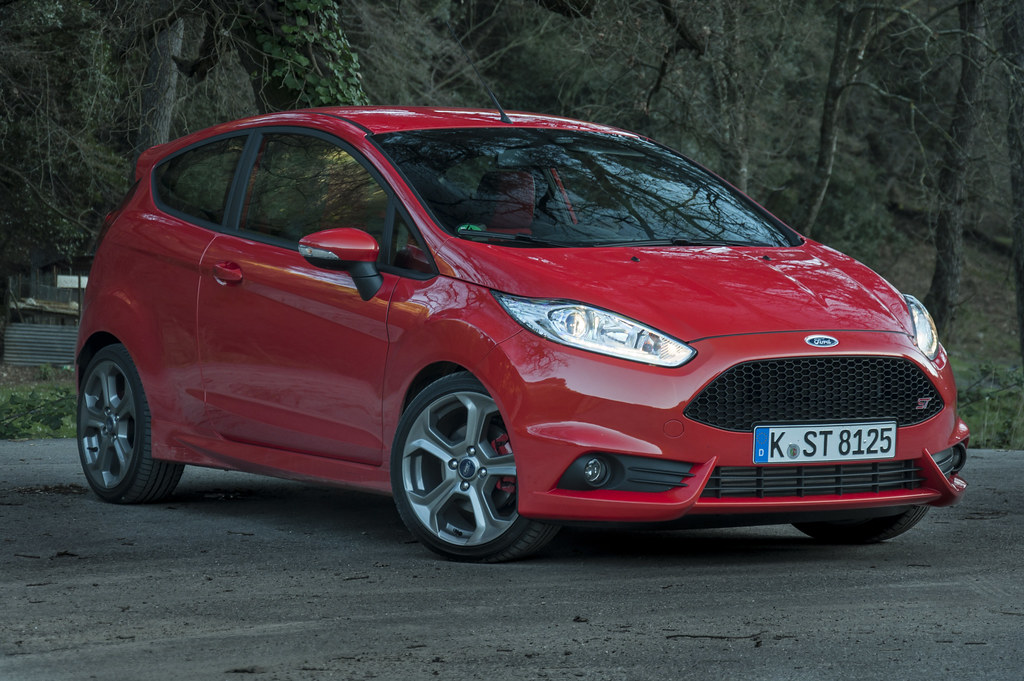
10. **Ford Fiesta**For many looking for an economical and compact used car, the Ford Fiesta might appear to be a sensible choice, offering a low initial price. However, this perception quickly crumbles when considering the widespread reliability issues reported by mechanics. Sean Pour, co-founder of SellMax, a nationwide car buying service, explicitly states that the Ford Fiesta is the number one vehicle he would not purchase, citing its chronic transmission problems.
Pour’s company has reportedly taken in hundreds of Ford Fiestas that suffer from severe transmission failures, often with remarkably low mileage on the odometer—some as low as 40,000 miles. What makes this particularly alarming is that some owners have had to replace the transmission more than once before their vehicle even reached the 100,000-mile mark. This pattern of repeated, major component failure highlights a critical design flaw that makes the Fiesta a continuous financial burden.
The transmission issues alone are a significant deterrent, transforming what seems like an initial bargain into a rapidly escalating money pit. These costly, recurring repairs quickly erase any perceived savings from the low purchase price, making it a far less economical choice in the long run than its sticker price suggests. Buyers are strongly advised to explore other compact car options that offer greater long-term reliability and fewer high-cost mechanical risks.
Car Model Information: 2014 Ford Fiesta SE
Name: Ford Fiesta
Manufacturer: Ford Motor Company
Production: June 1976 – July 2023
Class: Supermini
BodyStyle: hatchback
Layout: Front-engine, front-wheel-drive layout
Successor: Ford Puma (crossover)
ModelYears: 1978–1980, 2011–2019 (North America)
Categories: 1980s cars, 1990s cars, 2000s cars, 2010s cars, 2020s cars
Summary: The Ford Fiesta is a supermini car that was marketed by Ford from 1976 to 2023 over seven generations. Over the years, the Fiesta has mainly been developed and manufactured by Ford’s European operations, and had been positioned below the Escort (later the Focus).
Ford had sold over 15 million Fiestas from 1976 to July 2011, making it one of the best-selling Ford nameplates behind the Escort and the F-Series. It has been manufactured in the United Kingdom, Germany, Spain, Brazil, Argentina, Venezuela, Mexico, Taiwan, China, India, Thailand, and South Africa.
The Fiesta was discontinued in 2023, after over 22 million units had been made. The final Ford Fiesta rolled off the production line on 7 July 2023.
Get more information about: Ford Fiesta
Buying a high-performing used car >>>
Brand: Ford Model: Fiesta
Price: Not Priced Mileage: 75,861 mi.
Read more about: Steer Clear: The 15 Overrated Car Brands Riddled with Maintenance Nightmares and Low Reliability
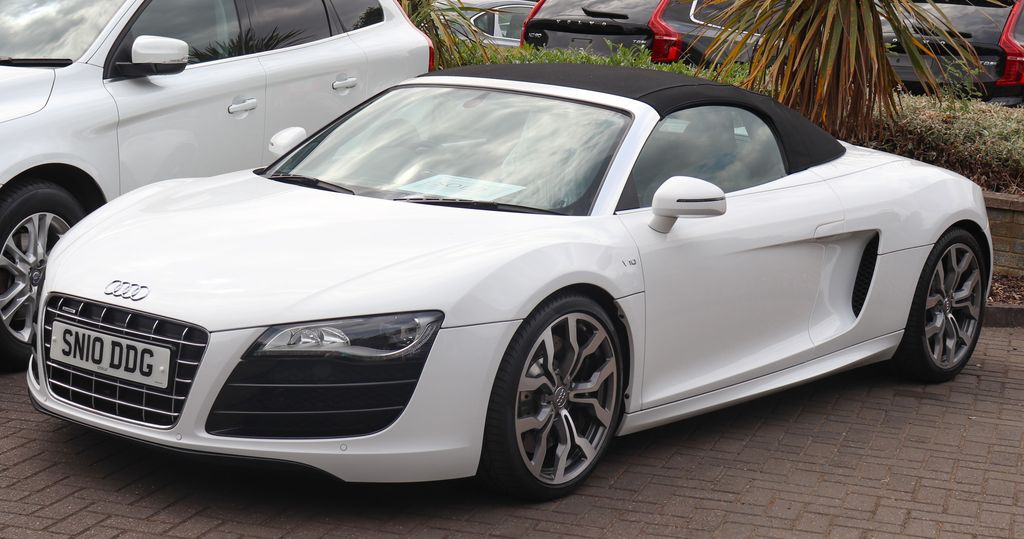
11. **Audi R8**The Audi R8 stands as a beacon of high-performance luxury, a dream car for many with its striking design and powerful engine. With an MSRP of $138,700, its initial price tag places it firmly in the exotic car category. While most buyers of such vehicles anticipate high maintenance costs, the R8 harbors a unique financial pitfall that makes mechanics and financial experts alike caution against its used purchase: shockingly high and rapidly increasing insurance premiums.
According to The Zebra, a leading insurance comparison platform, the average annual insurance cost for an Audi R8 experienced an astonishing increase of almost 150 percent from 2017 to 2018. This dramatic surge means that beyond the expected expenses of servicing a high-performance vehicle, owners face an unpredictable and substantial ongoing cost that can significantly impact the overall cost of ownership. Such volatile insurance rates can transform even a seemingly good deal on a used R8 into an unforeseen financial burden.
While a buyer with the means to afford an R8 might initially dismiss insurance as a minor consideration, its disproportionate cost highlights how the true expense of vehicle ownership extends far beyond the dealership. This unpredictable and escalating insurance burden, coupled with the inherently high costs of luxury performance vehicle maintenance, makes the Audi R8 a less financially sensible choice for even affluent used car enthusiasts, cementing its status as a car to approach with extreme caution.
Car Model Information: 2011 Audi R8 4.2 quattro
Caption: Audi R8 V10 Plus (Type 4S)
Manufacturer: Audi
Production: June 2006 – March 2024,(45,949 Units)
Class: Sports car
BodyStyle: coupé
Layout: Longitudinal engine,Mid-engine design,rear-wheel-drive
Sp: uk
ModelYears: 2007–2024
Categories: 2010s cars, 2020s cars, All articles with unsourced statements, Articles with short description, Articles with unsourced statements from March 2019
Summary: The Audi R8 is a mid-engine, 2-seater sports car, which uses Audi’s trademark quattro permanent all-wheel drive system. It was introduced by the German car manufacturer Audi AG in 2006. Production ended in the first quarter of 2024.
The car is exclusively designed, developed, and manufactured by Audi AG’s private subsidiary company manufacturing high performance automotive parts, Audi Sport GmbH (formerly quattro GmbH), and is based on the Lamborghini Gallardo and presently the Huracán platform. The fundamental construction of the R8 is based on the Audi Space Frame, and uses an aluminium monocoque which is built using space frame principles. The car is built by Audi Sport GmbH in a newly renovated factory at Audi’s ‘aluminium site’ at Neckarsulm in Germany. At the time it was introduced in 2006, the R8 became the first production car with full-LED headlamps.
Get more information about: Audi R8
Buying a high-performing used car >>>
Brand: Audi Model: R8
Price: $69,995 Mileage: 44,740 mi.
Read more about: Hollywood’s Enduring Icons: A Look at the Longest-Living Stars Who Shaped Entertainment
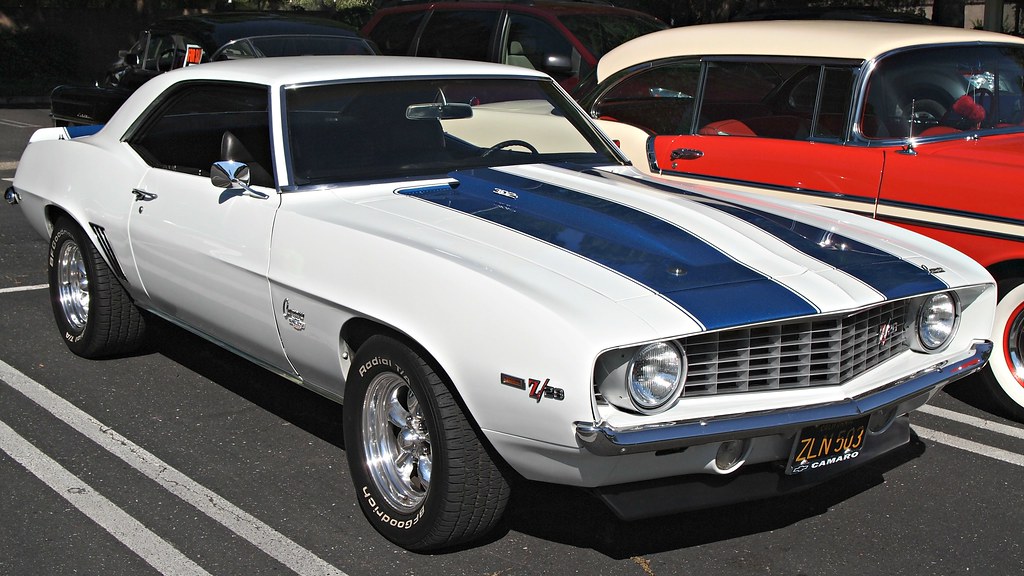
12. **Chevrolet Camaro**In the competitive arena of American muscle cars, the Chevrolet Camaro has reportedly fallen behind its rivals, leading General Motors to announce its discontinuation by 2022. This decision, as cited by Deepesh Chauhan of Car Indigo, reflects a broader pattern of issues that make the used Camaro a vehicle mechanics and automotive experts advise against, particularly for its poor long-term value and reliability.
A significant red flag for the used Camaro is its rapid depreciation, with the sports car losing nearly 45 percent of its original value within just the first two years of ownership. This steep decline means that buyers face substantial financial losses, even on models that appear to be a bargain on the used market. Such aggressive depreciation makes it a challenging asset to hold, regardless of its performance appeal.
Beyond financial devaluation, owners have reported a multitude of severe mechanical problems. Chauhan highlights issues such as faulty steering column wiring, early coolant leaks, and even instances of engine failure. These pervasive issues collectively contribute to a frustrating and costly ownership experience, requiring frequent and expensive trips to the mechanic. The accumulation of these problems undercuts the car’s perceived value and reliability, transforming a powerful machine into a potential money pit.
The combination of rapid value loss and recurring severe mechanical issues makes the Chevrolet Camaro a problematic choice for used car buyers. Despite its iconic status and engaging driving dynamics, the financial and mechanical risks associated with owning a used model are substantial, prompting experts to recommend looking elsewhere for a more dependable and less costly sports car experience.
Car Model Information: 2023 Chevrolet Camaro 1LS
Name: Chevrolet Camaro
Manufacturer: Chevrolet
Production: 1966–2002,2009–2023
ModelYears: 1967–2002,2010–2024
Class: Pony car
BodyStyle: coupe,convertible
Platform: GM F platform,GM Zeta platform,GM Alpha platform
Layout: Front-engine, rear-wheel-drive layout
Categories: 1970s cars, 1980s cars, 1990s cars, 2+2 coupés, 2000s cars
Summary: The Chevrolet Camaro is a mid-size American automobile manufactured by Chevrolet, classified as a pony car. It first went on sale on September 29, 1966, for the 1967 model year and was designed to compete with the Ford Mustang. The Camaro shared its platform and major components with the Firebird, produced by General Motors’ Pontiac division that was also introduced for the 1967 model year.
Four distinct generations of the Camaro were developed before production ended in 2002. The nameplate was revived on a concept car that evolved into the fifth-generation Camaro; production started on March 16, 2009.
Production of the sixth generation of the Camaro ended in December 2023, for the 2024 model year.
Get more information about: Chevrolet Camaro
Buying a high-performing used car >>>
Brand: Chevrolet Model: Camaro
Price: $23,965 Mileage: 36,667 mi.
Read more about: Unveiling the Underbelly: The Most Dangerous Popular Cars You Didn’t Know Were Lurking on America’s Roads, According to New Data
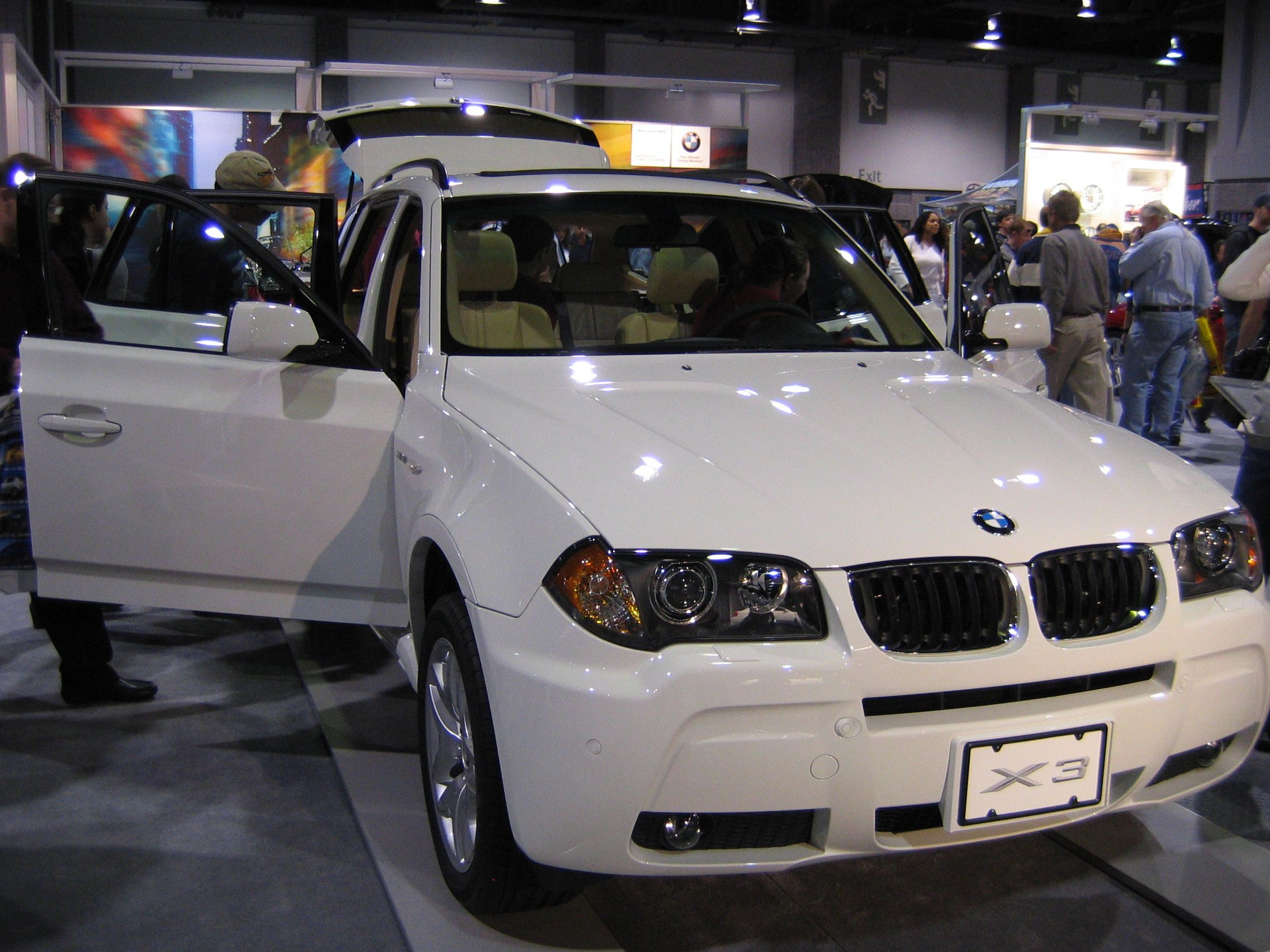
13. **BMW X3**The BMW X3, an appealing luxury SUV, might tempt used car buyers with its brand prestige and sophisticated features. However, Deepesh Chauhan of Car Indigo strongly advises against purchasing this BMW SUV, pointing to significant long-term financial liabilities that often surprise owners. The X3, much like other complex European luxury vehicles, comes with a unique set of challenges that can quickly turn it into a money pit.
One of the most alarming aspects of owning a used BMW X3 is its severe depreciation rate. Chauhan notes that the vehicle can lose as much as 70 percent of its original manufacturer’s suggested retail price (MSRP) in just five years. This rapid decline in value means that even a seemingly good deal on a used X3 will likely result in substantial financial loss upon resale, making it a poor investment for those concerned with long-term asset retention.
Furthermore, the X3’s sophisticated onboard electronics and intricate engineering contribute significantly to its high cost of ownership. As Chauhan explains, these complex systems cannot be easily repaired by a typical neighborhood mechanic, often requiring specialized tools, diagnostic equipment, and expertise found primarily at dealerships or specialized European car shops. This significantly limits repair options and drives up labor costs, making even routine fixes expensive.
Sourcing replacement parts for the BMW X3 also presents a considerable challenge, as they can be prohibitively costly and sometimes difficult to acquire. The combination of rapid depreciation, complex and expensive repairs, and the need for specialized service expertise ensures that the BMW X3, while luxurious, consistently ranks as a used car that mechanics recommend avoiding due to its potential to become a significant financial burden.
Car Model Information: 2020 BMW X3 PHEV xDrive30e
Name: BMW X3
Manufacturer: BMW
Production: 2003–present
Class: Compact luxury crossover SUV
BodyStyle: SUV
Caption: BMW X3 (G45)
Categories: 2010s cars, All-wheel-drive vehicles, All articles with bare URLs for citations, Articles with bare URLs for citations from July 2025, Articles with short description
Summary: The BMW X3 is a compact luxury crossover SUV manufactured by BMW since 2003, based on the BMW 3 Series platform. BMW markets the car as a Sports Activity Vehicle, the company’s proprietary descriptor for its X-line luxury vehicles.
The first-generation X3 was designed by BMW in conjunction with Magna Steyr of Graz, Austria—who also manufactured all X3s under contract to BMW. BMW manufactured the second-generation X3 at their Spartanburg plant in South Carolina, United States. Starting with the third generation, BMW South Africa’s Rosslyn plant began production of the X3, alongside the Spartanburg plant, after the facility underwent a major upgrade to prepare for the X3 production, replacing the long-running 3 Series production in the plant. About 76,000 units will be manufactured there annually.
The car was the first mid-size, premium SUV on the market. In 2008, BMW started competing with the Mercedes-Benz GLK-Class (renamed GLC-Class since 2016), and numerous other SUVs in this segment. The X3 is smaller than the X5 and X6, and bigger than the X1 and the X2.
The battery electric model is sold as the BMW iX3.
Get more information about: BMW X3
Buying a high-performing used car >>>
Brand: BMW Model: X3
Price: $28,351 Mileage: 36,951 mi.
Read more about: Consumer Reports Guide: Top 14 Cars of 2024-2025 Redefining Safety with Cutting-Edge Technology and Unbiased Crash Test Results
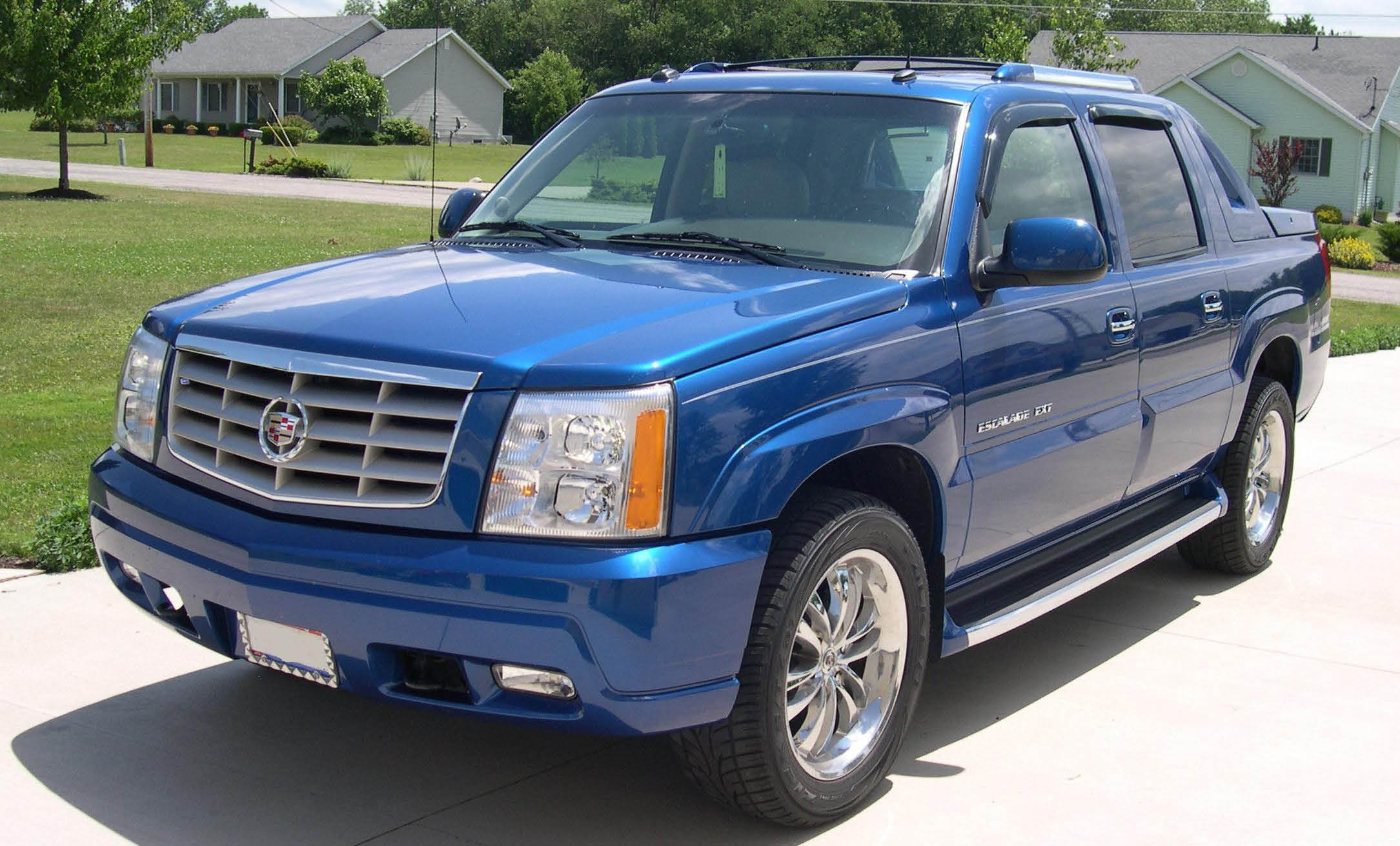
14. **Cadillac**Cadillac, a brand synonymous with American luxury and prestige, has long appealed to buyers seeking comfort and a commanding road presence. However, when it comes to long-term reliability and cost of ownership, mechanics and automotive experts consistently issue strong warnings against purchasing used models from this brand. Ben Mirecki of CarPages, for instance, offers a clear assessment, stating that Cadillac consistently ranks among the least reliable brands.
Mirecki highlights that in recent Consumer Reports lists, Cadillac has frequently landed in the bottom two or three for reliability, often taking the very last spot. This consistent poor performance underscores a pattern of “massive chronic problems” that extend across various models within the brand, making the acquisition of a used Cadillac a high-risk proposition for reliability-conscious buyers. The allure of luxury often overshadows the underlying mechanical vulnerabilities.
The specific issues cited by Mirecki are diverse and costly. These include various recurring suspension problems, which can be expensive to diagnose and repair, significantly impacting ride quality and safety. Additionally, finding spare parts for Cadillacs can be challenging, and when available, they are often prohibitively expensive. Mirecki also points out the brand’s cumbersome handling, describing the turning circle as akin to “that of a boat,” further detracting from the overall ownership experience.
Ultimately, while a used Cadillac might offer an attractive initial price point for luxury, the consistent reports of chronic mechanical failures, high repair costs due to expensive and limited parts, and overall poor reliability make it a brand that mechanics strongly advise against. It represents a luxury aspiration that, in reality, often leads to a constant cycle of unexpected expenses and frustration, firmly establishing it as a money pit in the used car market.
Read more about: Beyond the Badge: A Deep Dive into 14 Overrated Car Brands You Might Regret Buying in 2025
Choosing a used car is a significant financial decision, and while the allure of a low initial price or a prestigious badge can be tempting, the insights from seasoned mechanics are invaluable. The vehicles detailed in both sections of this guide represent models that consistently rack up huge bills for their owners, transforming a seemingly smart purchase into a costly long-term commitment. By prioritizing reliability, affordability of parts, and ease of maintenance—qualities often found in models mechanics recommend—buyers can steer clear of these notorious money pits and secure transportation that offers true peace of mind and predictable ownership costs. Remember, in the world of used cars, real-world experience matters far more than a shiny exterior or a tantalizingly low sticker price. Do your research, listen to the experts, and drive away with confidence, not regret.


